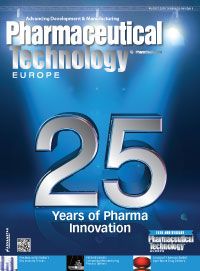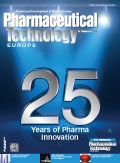Opportunities with Softgels
Pharmaceutical Technology Europe
Stephen Tindal from Catalent Pharma Solutions speaks with Pharmaceutical Technology Europe about advances in softgel technologies.

Softgels on the Horizon
Softgel technologies offer an alternative drug-delivery vehicle for lead candidates that are difficult to formulate.
Softgels are gaining widespread acceptance as a drug-delivery system for pharmaceuticals, particularly for lead compounds that present solubility and permeability challenges during formulation development. With advances in softgel technologies ever since the invention of the manufacturing process by RP Scherer in the 1930s, it is now possible to create solid dosage forms from liquids, pastes and even powders that could not be developed into tablet forms, notes Stephen Tindal, director, Formulation and Site R&D Lead at Catalent Pharma Solutions.
“Commonly used in medicines and food supplements alike, the softgel capsule has moved on from the simple gelatin shell, with new materials and modified delivery profiles enabling improved drug-delivery forms to be created,” says Tindal. He further explains that although gelatin is an ideal material for the shell of a softgel, it is not suitable for vegetarian diets. “Moreover, the appearance of bovine spongiform encephalopathy (BSE) in the 1990s led to
the avoidance of the commonly used bovine gelatin in favour of porcine material.”

Pharmaceutical Technology Europe25th Anniversary Issue
According to Tindal, vegetarian alternatives have been developed in the past decade or so, solving all of these problems in an instant. “They typically combine a carrageenan with a corn or potato starch derivative, and shelf-lives of three years or more are possible with no loss of shell integrity.” The additional advantage is that fills can be carried out at higher temperatures for lipids that are semi-solid at room temperature, Tindal points out.
Enteric coatings can be applied to softgels to prevent the capsule from dissolving in the acid environment of the stomach so that drug release is delayed until it has moved further down the gastrointestinal tract. “This feature is important if the contents are acid sensitive, if they might cause damage to the stomach lining, or if absorption is actively required in the intestines,” explains Tindal. “Rapid intestinal absorption can be achieved if the shell is designed to dissolve very quickly and permeation enhancers are added to the contents, enabling high local concentrations to be achieved.”
“Softgels can even be made chewable, making them particularly suitable for paediatric formulations,” says Tindal “This is achieved by combining the capsule contents with flavouring and taste-masking agents and making the shell out of a ribbon that is made weaker, perhaps by mixing the gelatin with a starch. Printed patterns can also be applied.”
According to Tindal, researchers are currently developing new softgel formulations to deliver biological molecules, such as peptides, proteins and macromolecules. “Lipid-based formulations that self-emulsify are able to enhance bioavailability, minimising absorption variability with negligible food effect, while lipid-based solution and suspension formulations can have a major impact on bioavailability, whether that is by enabling digestion in-vivo by lipolysis or even modifying the absorption route to allow lymphatic transport.”

About the Author
Stephen Tindal is director, Formulation and Site R&D Lead at Catalent Pharma Solutions.

Drug Solutions Podcast: A Closer Look at mRNA in Oncology and Vaccines
April 30th 2024In this episode fo the Drug Solutions Podcast, etherna’s vice-president of Technology and Innovation, Stefaan De Koker, discusses the merits and challenges of using mRNA as the foundation for therapeutics in oncology as well as for vaccines.